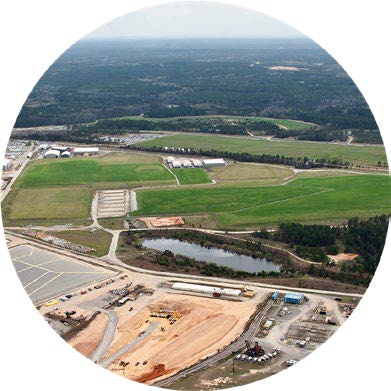Tech Briefs
Savannah River National Laboratory
MicroCED: Microbial Based Chlorinated Ethene Destruction
Scientists at the Savannah River National Laboratory (SRNL) have discovered a new and innovative treatment for the decontamination, detoxification and elimination of chlorinated ethenes (CE) in the environment. MicroCED: Microbiological-based Chlorinated Ethene Destruction rapidly and completely converts CE to safe end products without production or accumulation of toxic by-products.
Background
Decades of widespread use and inappropriate disposal of CE have resulted in pervasive environmental contamination at thousands of sites in the U.S. and abroad. These compounds are potent toxicants to humans and extremely persistent in the environment. Cost effective, reliable and safe remediation technologies are needed to prevent, contain and remove chloroethene contamination in the environment. MicroCED was specifically designed as an efficient and reliable method to contain, reduce and destroy chloroethene contaminant plumes in the subsurface environment. Extensive testing and performance experiments have been conducted at the Savannah River Site and Clemson University.

At a glance
- Rapidly converts toxic substances
- Worldwide applications
- Sensitive and efficient bio-process
- Process uses naturally occurring bacteria
- Treats chloroethenes or mixtures
- Cost effective and low maintenance
- U.S. Patent 7,615,153
How it works
MicroCED consists of a unique mixture of naturally occurring bacteria that can completely transform lethal CEs to safe, nontoxic end products. The treatment process involves introducing MicroCED into a contaminated subsurface environment whereby the bacteria are nourished and grow through the process of detoxification and degradation of the CEs. The versatility of MicroCED allows for it to be used as a standalone bioremediation treatment for widespread, low level chloroethene contamination or in combination with aggressive source-zone treatment technologies.
Adaptable for many applications
Contamination due to CEs is a global problem. Many government, industrial, and private lands within the U.S. and abroad are contaminated by chlorinated ethenes. It is estimated that more than 50,000 sites in the U.S. alone are contaminated by chlorinated ethenes. An international market exists as well due to contamination by and accumulation of halogenated hydrocarbons affecting all industrialized countries. As long as these pollutants continue to enter and persist in the environment there will be the need for a detoxification and remediation response. MicroCED is that cost effective and proven response media.
Partnering Opportunities
SRNL invites interested companies with proven capabilities in this area of expertise to enter into a licensing agreement with SRNL to market this nuclear material detection system. Interested companies will be requested to submit a business plan setting forth company qualifications, strategies, activities, and milestones for commercializing this invention.
Qualifications should include past experience at bringing similar products to market, reasonable schedule for product launch, sufficient manufacturing capacity, established distribution networks, and evidence of sufficient financial resources for product development and launch.
Download Tech Brief
Contact Information
Savannah River National Laboratory
E-mail: partnerships@srnl.doe.gov